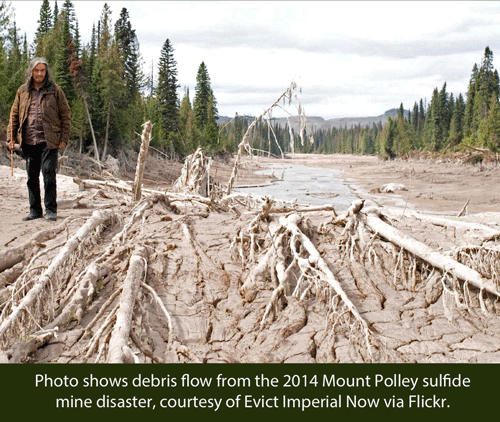For years, PolyMet has claimed that their proposed sulfide mine could have no impact on the Boundary Waters Canoe Area Wilderness. But an article in the Timberjay reveals that after closure, polluted groundwater from PolyMet could flow into Birch Lake and then into the Boundary Waters. Even more disturbing, the models used by PolyMet to predict that no pollution would escape are riddled with miscalculations and flawed assumptions.
Timberjay:
According to a June 18, 2015, letter from the Great Lakes Indian Fish and Wildlife Commission (GLIFWC), one of the cooperating agencies on the decades-long study, Barr Engineering, the PolyMet contractor that actually ran the water flow model used in the study, made fundamental miscalculations, rendering the results of this key element of the environmental study invalid. Barr works as a consultant for PolyMet, yet the lead agencies have relied heavily on its technical work throughout the environmental review process.
GLIFWC, which represents 11 Indian bands in Minnesota, Michigan, and Wisconsin, maintains its own scientific research staff. The agency, based in Odanah, Wis., is the only entity, other than Barr Engineering, which has actually run the MODFLOW model, a highly complex computer program for determining water flow through the environment.
The model’s results were used to make a number of key predictions in the PolyMet EIS, including that any potential contaminant flow from the mine site would move south and away from the BWCAW.
Governor Dayton has said that his decision on PolyMet is the “most momentous” decision he will make as Governor. How can he make this decision if he doesn’t have scientific data that accurately predicts where pollution from PolyMet might go?
Additionally, the contractor who prepared the model stands to benefit if PolyMet gets permitted, which presents a possible conflict of interest.
The dispute over the water modeling raises another troubling question about whether the lead agencies have conducted the required due diligence to insure independent verification of the results produced by Barr Engineering.
Federal law, which would apply to the U.S. Forest Service and the Army Corps of Engineers, co-lead agencies on the PolyMet project, requires lead agencies to “independently verify” the work of consultants they rely on to produce environmental studies. Yet none of the co-lead agencies has run the MODFLOW model on their own, and the only independent entity to do so has fundamentally challenged the accuracy of the work done by Barr.
This week, the Timberjay followed up with an editorial that lays out a solution to this mess.
But given the significance of the discrepancy and the seriousness of the implications, it would be irresponsible of the co-lead agencies in this instance to move forward with issuing a final EIS without having an independent third party examine the issue. The water model is foundational to the EIS, and its predictions were linked to other major findings in the study. If the model contains errors of the magnitude outlined by GLIFWC, there’s very little reason to trust the EIS’s findings.
Without accurate information, how can he make a decision that would affect Minnesota for hundreds of years?
MNDNR should hire a third party or two that is not a consultant for the Polymet ownership (Polymet Canada, and Swiss-based Glencore, known for it’s world-wide sulfide mining problems.) This is pretty fundamental.
Carl Johnson
This project needs to be stopped because it’s a bad deal for Mn and a bad deal for our environment .